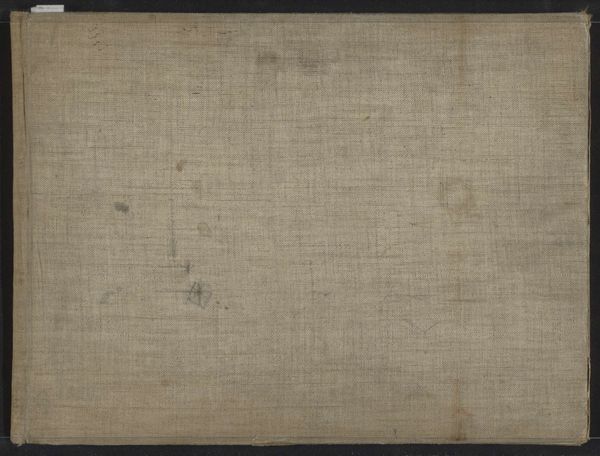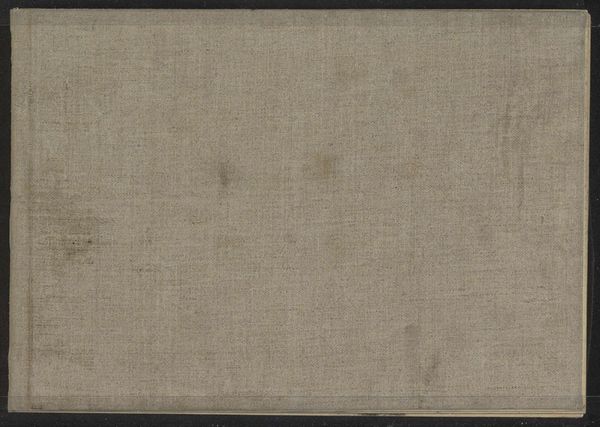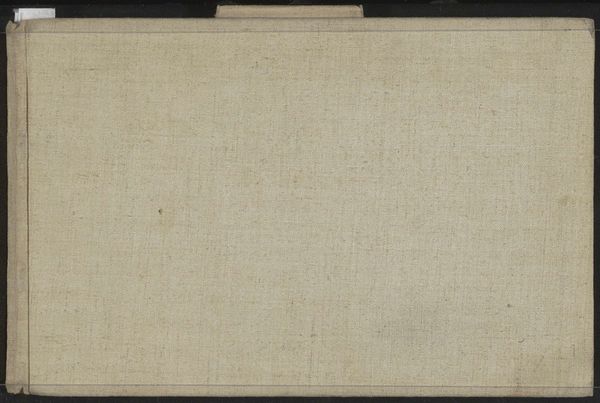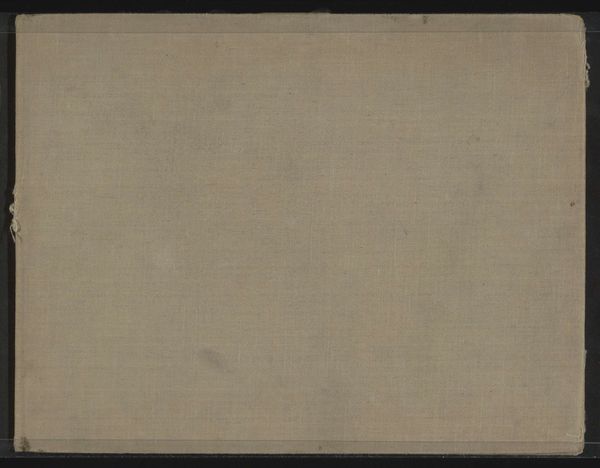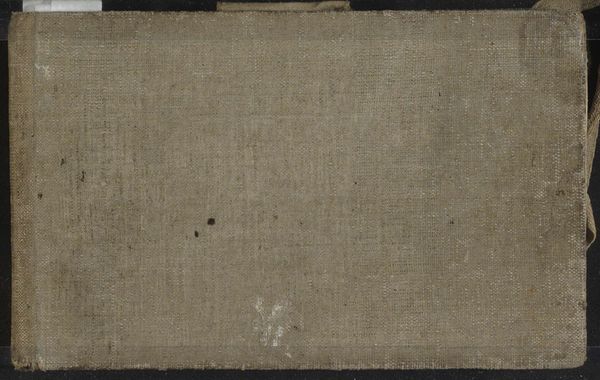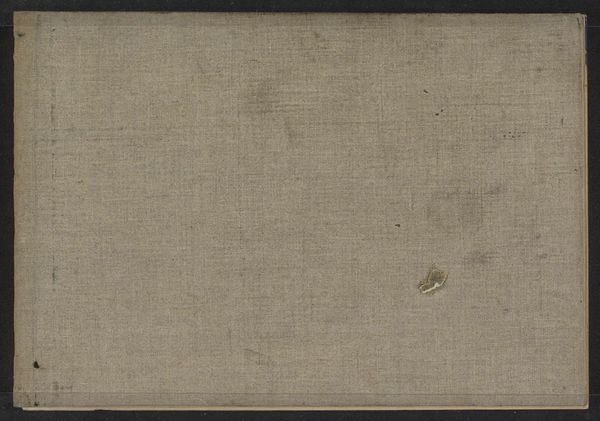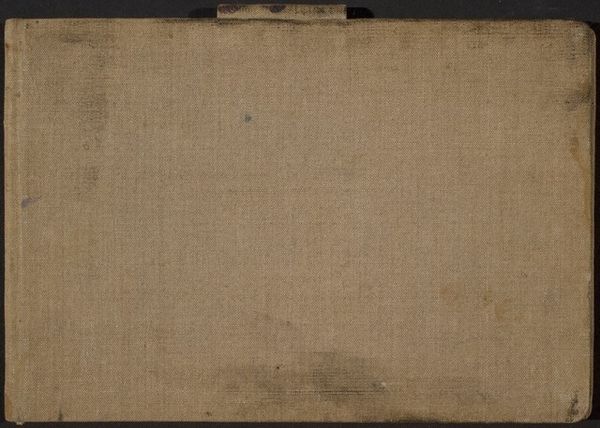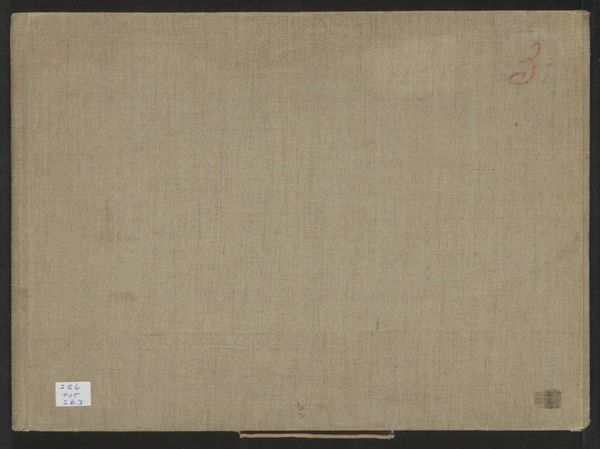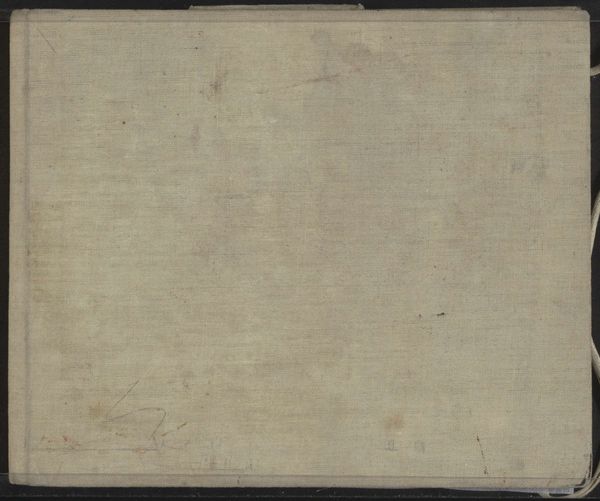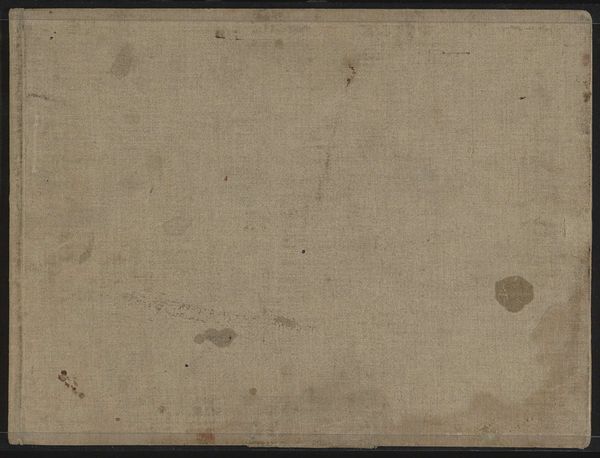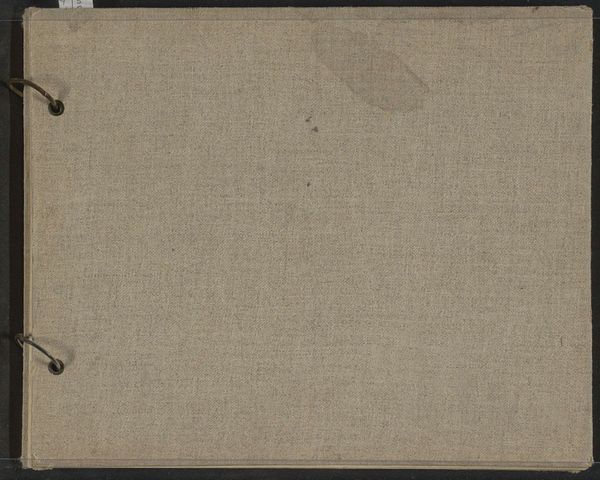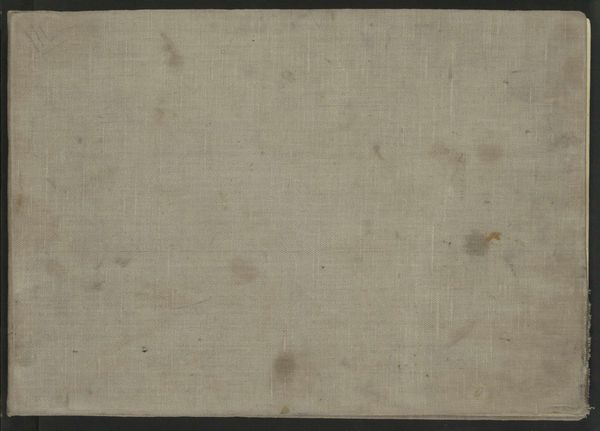
drawing, mixed-media, collage, paper
#
drawing
#
mixed-media
#
collage
#
paper
Dimensions: height 180 mm, width 245 mm, thickness 22 mm, width 490 mm
Copyright: Rijks Museum: Open Domain
Curator: This is a sketchbook with 68 leaves by Bramine Hubrecht, dating roughly from 1865 to 1913. It’s a mixed-media work, incorporating drawing, collage, and various paper types, held in the collection of the Rijksmuseum. It really is just the binding we are looking at, right now. Editor: It certainly presents a blank slate at first glance, doesn't it? An almost austere cover that promises a story untold. It feels intimate somehow, despite the plainness, hinting at hidden narratives. Curator: Exactly! I see this not as blankness, but a space pregnant with intention. Consider that Bramine Hubrecht, a woman artist working during that period, would likely face enormous institutional barriers. Her sketchbook would serve as a zone of private experimentation, of potential artistic gestures unfettered by social expectation. Editor: That's a compelling point. I suppose it represents a sort of defiance, a declaration of her creative existence regardless of external validation. The humble materials also speak to something; not opulence, but necessity, and determination. Curator: Yes, this is art historical object as witness to creative agency. Think of all that it conceals within. The book holds layers of meanings, and those drawings and collages have psychological depth because they embody a complex conversation between the artist and her historical context. Editor: Absolutely. We are viewing a quiet revolution here, on a very personal scale. Each turn of the page represents, potentially, a challenging of societal norms, and that should inform how we look at similar objects today. These collections can rewrite institutional and public memory through marginalized voices. Curator: In addition, the collage element highlights a rupture and a restructuring—fragmented images pieced together suggest the world remade according to one's inner vision. Collage becomes the perfect symbol. Editor: Well, the sight of the binding of that book sparks thoughts of both limitations and possibilities; I keep coming back to how tactile it must feel. Thanks, as always, for helping us look beyond initial impressions! Curator: The pleasure is all mine. Each historical artwork offers a new path to interrogate the self, others, and the social codes that inform us all.
Comments
No comments
Be the first to comment and join the conversation on the ultimate creative platform.
